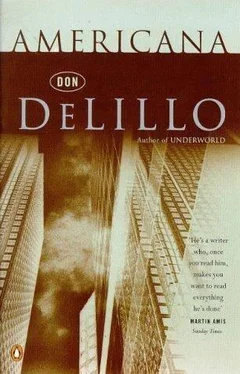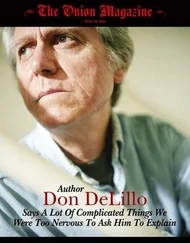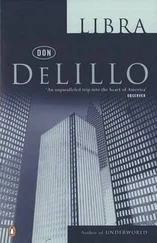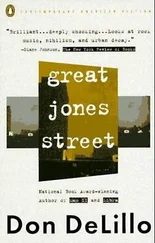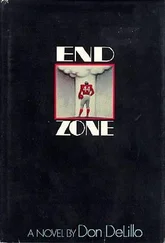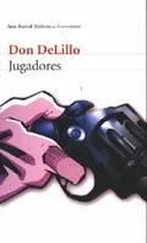Don DeLillo - Americana
Здесь есть возможность читать онлайн «Don DeLillo - Americana» весь текст электронной книги совершенно бесплатно (целиком полную версию без сокращений). В некоторых случаях можно слушать аудио, скачать через торрент в формате fb2 и присутствует краткое содержание. Жанр: Современная проза, на английском языке. Описание произведения, (предисловие) а так же отзывы посетителей доступны на портале библиотеки ЛибКат.
- Название:Americana
- Автор:
- Жанр:
- Год:неизвестен
- ISBN:нет данных
- Рейтинг книги:5 / 5. Голосов: 1
-
Избранное:Добавить в избранное
- Отзывы:
-
Ваша оценка:
- 100
- 1
- 2
- 3
- 4
- 5
Americana: краткое содержание, описание и аннотация
Предлагаем к чтению аннотацию, описание, краткое содержание или предисловие (зависит от того, что написал сам автор книги «Americana»). Если вы не нашли необходимую информацию о книге — напишите в комментариях, мы постараемся отыскать её.
Americana — читать онлайн бесплатно полную книгу (весь текст) целиком
Ниже представлен текст книги, разбитый по страницам. Система сохранения места последней прочитанной страницы, позволяет с удобством читать онлайн бесплатно книгу «Americana», без необходимости каждый раз заново искать на чём Вы остановились. Поставьте закладку, и сможете в любой момент перейти на страницу, на которой закончили чтение.
Интервал:
Закладка:
Dessert was a nervous affair. The women did not remain seated and even avoided standing in one spot for more than a few minutes at a time. I said I had to catch a big silver bird to the Coast early the next morning and Wendy saw me to the door. She reprimanded me for being naughty and then, tongue to my ear, promised me a night of canal-zone pleasures if only I would remain. The elevator was not working and I had to walk down sixteen flights. It was snowing heavily. On Second Avenue dozens of off-duty cabs went by. Finally one of them pulled up. I got in and the driver batted down the flag and started off toward lower Manhattan at high speed in the total snow.
Sullivan lived in a top-floor loft on Greene Street. Her reputation was growing locally and I felt it wouldn't be long before the critics and art marketeers and all those natty little gallery men with vicious shoes and dagger sideburns recognized that she belonged in the top rank of American sculptors. She worked in mahogany, epoxy and automobile paint. In her own words, everything she did pursued a curve. The smoothness of her shapes and the dull blunt colors she used seemed to suggest a horrible softness, that of slugs or worms, boneless things curling at the edge of one's sleep. Several people had told her they were afraid to touch her pieces of wood and this pleased her but only to a point; she said her highest ambition was to give people the feeling that they were eating small live wet amphibians. The Whitney owned two of Sullivan's works and private collectors accounted for about ten more. At least thirty had been bought by various corporations. A chemical firm in Muncie had recently purchased three of her smaller things and placed them in the lobby. This had surprised and delighted me. Like all those who loiter around talent I tended to overpraise Sullivan and to consider her work one of the essential measures in the salvation of the republic, and it did not seem impossible to me that Indiana might rise to new spiritual heights thanks to Sullivan's three pieces of carefully handcrafted afterbirth. She told me not to get too excited. The chemical firm was merely trying to improve its image; they had even sent a number of their executives to a mountain retreat where they walked around in sandals and togas; and it was all a tax gimmick anyway. I had met Sullivan when our unit at the network did a half-hour filmed report on something we called the phenomenon of power-art, meaning art produced by electric tools. Two minutes were devoted to Sullivan and her fantastic studio. It took almost a whole day to film this segment and she and I spent a good part of it in conversation. She said she liked me because I was so beautiful and sad, so squarely in the American tradition. Only Sullivan, I believed, could save me.
The front door was off its hinges. It stood in the tiled hallway with the word door painted white across the glass pane which composed its upper half. I walked up the first flight. The two doors were marked good and evil. I kept climbing. The tiled steps were rounded and black at the edges. I passed four more doors. One was labeled breast and the others were marked justice, martyrdom and river. Climbing the final flight to Sullivan's loft, I smelled something terrible blowing through the building, some presence that carried with it a sudden vivid evocation of open wounds, swamp, panic and disease, the stench of a retreating army, and it was so strange and pervasive that I knew I must make a joke of it, as I did, ultimately, with all those things I did not understand, and so I assembled an opening remark to toss at Sullivan. The remark would be both clever and graphic and I was still working on the exact phrasing when I opened the unmarked door and walked into the room.
She was not there. Seven coiled shapes, hulking and purgatorial, stood around the loft. They were much larger than anything she had done before and far more complex, wheels inside wheels, scythes rising from the rounded edge of a ludicrous shield, men or burial urns, industrial menace of cogs and inner clocks, a massive butter churn, all fearful, indefinable in the end, looming and never still, her long soul in wood. To shape, bond and coat. She said it was the blessing of God, the final grace, to have given us opposable thumbs. I could never enter Sullivan's studio without feeling that I had just stepped, unwillingly, into an alien country, one visited in the past but with a landscape that remained no more than the barest of memories. There were first the shapes circling in and out of their own smooth contours. There were the two spotlights placed on pedestals at opposite ends of the room. There was the wood-dust covering everything and then the hungry tools with teeth and claws, the radial-arm saw and saber saw, the orbital sander, the huge band saw and stationary sander, all their wires looped in the dust. There was, finally, most alien, the membranous chemical material which covered the walls and ceiling. Similar to the kind of wrapping used to keep sandwiches fresh, but somewhat more dull and opaque, this material was not wallpapered on in sections; it was a single tentlike unit, clinging, billowing slightly at times, bubbled with air pockets between itself and the walls. One rectangular section corresponding to the length and width of the door had been cut away so that people could enter and leave. The thing had been placed in the loft by the previous tenant, a Swiss inventor and collagist who was totally, rampagingly mad as only the Swiss can be. He referred to this, his lifework, as the Cocoon, and to himself as the Cocoonist. It had been his hope to fashion an environment that would be a work of life as opposed to one of art, an organism insulated from the hostile outer topography, a clump of palpitating caterpillars, a micro world, a man beyond the man who made it. The material, after all, was made of chemical substances and therefore could be said to possess some basic life-force different in degree but not in essence from that shared by all things which crawled or walked. This is what he told Sullivan and this is what Sullivan told me. The Cocoon had been just the beginning of his work but soon after it was floated into the loft he ran out of money, got into trouble with the landlord for setting fire to an alley cat as part of a formal satanic ritual and finally borrowed enough money to book passage on a freighter bound for North Africa, departing in a pair of Sullivan's flyless dungarees and the Lady Hathaway shirt I had given her as a birthday present.
The membrane had microscopic pores which enabled air to enter. Natural light could barely penetrate but the spotlights were an adequate substitute. Sullivan preferred them actually, claiming that sunlight was overrated. I put my fingers to one of the pieces of sculpture; the paint was dry, a deep gray; the others were browns of varying flat tones, a black and bone-white, a glacial silver. The three windows in the loft, pale and wavering behind the skin of the sandwich wrap, were shut tight, and yet the wrapping undulated as if grazed by a sea breeze. Some of the smaller power tools lay on a workbench. I went from figure to figure, thumbing each one, running the back of my hand over the bending surfaces. The building was quiet. I wondered why this one door had not been marked; to give a door the name River was an act of odd joy, or poetry, or childhood. I thought of the river in Old Holly then, and then of leaves, palms up, turning in a gentle current above the long, still, suspended fish with silver-dollar eyes, and then the woman ironing clothes in the shingled house, standing in her slip, the blinds not quite shut, and the September music of that warm night, elms and leisures of a dark street when the lawns smell of sweet wet grass and you are a boy, the hopelessness of lust, her bare arms and the shine of silk moving as her slow body moved, twice my age at least, ironing with the smooth movements of a lioness caressing her cubs, and I held to a tree and watched for an hour or more, twice my age, her light brown hair, lazy eyes, the softness of her face, never seen before and never since. All I wanted now was sleep.
Читать дальшеИнтервал:
Закладка:
Похожие книги на «Americana»
Представляем Вашему вниманию похожие книги на «Americana» списком для выбора. Мы отобрали схожую по названию и смыслу литературу в надежде предоставить читателям больше вариантов отыскать новые, интересные, ещё непрочитанные произведения.
Обсуждение, отзывы о книге «Americana» и просто собственные мнения читателей. Оставьте ваши комментарии, напишите, что Вы думаете о произведении, его смысле или главных героях. Укажите что конкретно понравилось, а что нет, и почему Вы так считаете.
